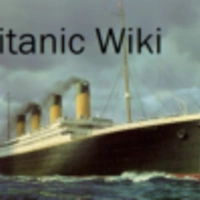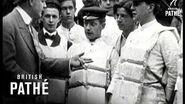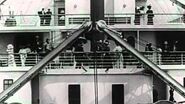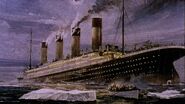(Editing a gallery) |
Tag: Visual edit |
||
| Line 64: | Line 64: | ||
Titanic The Facts Told By Real Survivors British Pathé |
Titanic The Facts Told By Real Survivors British Pathé |
||
5BreakupWeb-600x395.jpg |
5BreakupWeb-600x395.jpg |
||
| + | Break up! |
||
C1noP2x-asset-mezzanine-16x9-jBLtHD7.jpg |
C1noP2x-asset-mezzanine-16x9-jBLtHD7.jpg |
||
| + | "1:45 AM" |
||
SOS-Titanic-1979-tv-movie.jpg |
SOS-Titanic-1979-tv-movie.jpg |
||
| + | "2:15 AM" |
||
| − | Unreal+Engine-spotlights-walking-the-titanic-recreating-history-with-a-vr-experience-blog body |
+ | Unreal+Engine-spotlights-walking-the-titanic-recreating-history-with-a-vr-experience-blog body |
| + | img3-1640x934-2f9dce9a7a4e9f880fcad29e9424d00a2a91fe27.jpg |
||
| + | "2:10 AM" |
||
</gallery> |
</gallery> |
||
Revision as of 01:41, 30 October 2019

RMS Titanic (colorized image)
RMS Titanic (Royal Mail Steamer "Titanic", sometimes known as SS Titanic) was a British passenger liner that sank in the North Atlantic Ocean in 1912 after the ship struck an iceberg during her maiden voyage from Southampton to New York City. Of the 2208 passengers and crew aboard, 1496 died, making it one of modern history's deadliest peacetime commercial marine disasters. RMS Titanic was the largest ship afloat at the time she entered service and was the second of three Olympic-class ocean liners operated and owned by the White Star Line, being built at the Harland and Wolff shipyard.
Thomas Andrews, chief naval architect of the shipyard at the time, died in the disaster. Titanic was under the command of Capt. Edward Smith, who also went down with the ship. The ocean liner carried some of the wealthiest people in the world, as well as hundreds of emigrants from Great Britain and Ireland, Scandinavia and elsewhere throughout Europe who was seeking a new life in the United States. The first-class accommodation was designed to be the pinnacle of comfort and luxury, with an on-board gymnasium, swimming pool, libraries, high-class restaurants, and opulent cabins. A high-powered radiotelegraph transmitter was available for sending passenger "marconigrams" and for the ship's operational use. Although Titanic had advanced safety features such as watertight compartments and remotely activated watertight doors, it only carried enough lifeboats for 1,178 people—about half the number on board, and one-third of her total capacity—due to outdated maritime safety regulations. The ship carried 16 lifeboat davits which could lower three lifeboats each, for a total of 48 boats. However, Titanic carried only a total of 20 lifeboats, four of which were collapsible and proved hard to launch during the sinking.
After leaving Southampton on 10 April 1912, Titanic called at Cherbourg in France and Queenstown (now Cobh) in Ireland before heading west to New York. On 14 April, four days into the crossing and about 375 miles (600 km) south of Newfoundland, she hit an iceberg at 11:40 p.m. ship's time. The collision caused the hull plates to buckle inwards along her starboard (right) side and opened five of her sixteen watertight compartments to the sea; she could only survive four floodings. Meanwhile, passengers and some crew members were evacuated in lifeboats, many of which were launched only partially loaded. A disproportionate number of men have left aboard because of a "women and children first" protocol for loading lifeboats. At 2:20 a.m., she broke apart and foundered with well over one thousand people still aboard. Just under two hours after Titanic sank, the Cunard liner RMS Carpathia arrived and brought aboard an estimated 705 survivors.
The disaster was met with worldwide shock and outrage at the huge loss of life and the regulatory and operational failures that led to it. Public inquiries in Britain and the United States led to major improvements in maritime safety. One of their most important legacies was the establishment in 1914 of the International Convention for the Safety of Life at Sea (SOLAS), which still governs maritime safety. Additionally, several new wireless regulations were passed around the world in an effort to learn from the many missteps in wireless communications—which could have saved many more passengers.
The wreck of Titanic was discovered in 1985 (more than 70 years after the disaster) during a US military mission, and it remains on the seabed. The ship was split in two and is gradually disintegrating at a depth of 12,415 feet (3,784 m). Thousands of artifacts have been recovered and displayed at museums around the world. Titanic has become one of the most famous ships in history; her memory is kept alive by numerous works of popular culture, including books, folk songs, films, exhibits, and memorials. Titanic is the second largest ocean liner wreck in the world, only beaten by her sister HMHS Britannic, the largest ever sunk, although she holds the record as the largest sunk while actually in service as a liner due to Britannic being used as a hospital ship at the time of her sinking. The final survivor of the sinking, Millvina Dean, aged two months at the time, died in 2009 at the age of 97.
Background
The name Titanic derives from the Titan of Greek mythology. Built at Belfast, Ireland, in the United Kingdom of Great Britain and Ireland (as it was then known), the RMS Titanic was the second of the three Olympic-class ocean liners—the first was the RMS Olympic and the third was the HMHS Britannic. Britannic was originally to be called Gigantic and was to be over 1,000 feet long. They were by far the largest vessels of the British shipping company White Star Line's fleet, which comprised 29 steamers and tenders in 1912. The three ships had their genesis in a discussion in mid-1907 between the White Star Line's chairman, J. Bruce Ismay, and the American financier J. P. Morgan, who controlled the White Star Line's parent corporation, the International Mercantile Marine Co. (IMM).
The White Star Line faced an increasing challenge from its main rivals Cunard, which had recently launched the Lusitania and the Mauretania—the fastest passenger ships then in service—and the German lines Hamburg America and Norddeutscher Lloyd. Ismay preferred to compete on size rather than speed and proposed to commission a new class of liners that would be larger than anything that had gone before as well as being the last word in comfort and luxury. The company sought an upgrade in their fleet primarily in response to the Cunard giants but also to replace their oldest pair of passenger ships still in service, being the SS Teutonic of 1889 and SS Majestic of 1890. Teutonic was replaced by Olympic while Majestic was replaced by Titanic. Majestic would be brought back into her old spot on White Star Line's New York service after Titanic's loss.
The ships were constructed by the Belfast shipbuilders Harland and Wolff, who had a long-established relationship with the White Star Line dating back to 1867. Harland and Wolff were given a great deal of latitude in designing ships for the White Star Line; the usual approach was for the latter to sketch out a general concept which the former would take away and turn into a ship design. Cost considerations were relatively low on the agenda and Harland and Wolff was authorized to spend what it needed on the ships, plus a five percent profit margin. In the case of the Olympic-class ships, a cost of £3 million (£250 million in 2015 money) for the first two ships was agreed on plus "extras to contract" and the usual five percent fee.
Harland and Wolff put their leading designers to work designing the Olympic-class vessels. The design was overseen by Lord Pirrie, a director of both Harland and Wolff and the White Star Line; naval architect Thomas Andrews, the managing director of Harland and Wolff's design department; Edward Wilding, Andrews' deputy and responsible for calculating the ship's design, stability and trim; and Alexander Carlisle, the shipyard's chief draughtsman and general manager. Carlisle's responsibilities included the decorations, equipment and all general arrangements, including the implementation of an efficient lifeboat davit design.
On 29 July 1908, Harland and Wolff presented the drawings to J. Bruce Ismay and other White Star Line executives. Ismay approved the design and signed three "letters of agreement" two days later, authorizing the start of construction. At this point, the first ship—which was later to become Olympic—had no name, but was referred to simply as "Number 400", as it was Harland and Wolff's four hundredth hull. Titanic was based on a revised version of the same design and was given the number 401.
Maiden voyage
After completing construction in Belfast, Titanic set sail on her delivery trip to Southampton.
On Wednesday, April 10th, 1912, she departed on her maiden voyage from Southampton to New York. After a nearly colliding with another ship, Titanic arrived at her first stop in Cherbourg. Then she went to Queenstown before departing to New York.
Sinking
- Main article: Sinking of the Titanic

The New York Herald front page.
At 11:40 p.m. (ship's time) on 14 April, lookout Frederick Fleet spotted an iceberg immediately ahead of Titanic and alerted the bridge. First Officer William Murdoch ordered the ship to be steered around the obstacle and the engines to be stopped, but it was too late; the starboard side of Titanic struck the iceberg, creating a series of holes below the waterline. The hull was not punctured by the iceberg but rather dented such that the hull's seams buckled and separated, allowing water to seep in. Five of the ship's watertight compartments were breached. It soon became clear that the ship was doomed, as she could not survive more than four compartments being flooded. Titanic began sinking bow-first, with water spilling from compartment to compartment as her angle in the water became steeper.
Those aboard Titanic were ill-prepared for such an emergency. In accordance with accepted practices of the time, where ships were seen as largely unsinkable and lifeboats were intended to transfer passengers to nearby rescue vessels, Titanic only had enough lifeboats to carry about half of those on board; if the ship had carried her full complement of about 3,339 passengers and crew, only about a third could have been accommodated in the lifeboats. The crew had not been trained adequately in carrying out an evacuation. The officers did not know how many they could safely put aboard the lifeboats and launched many of them barely half-full. Third-class passengers were largely left to fend for themselves, causing many of them to become trapped below decks as the ship filled with water. The "women and children first" protocol was generally followed when loading the lifeboats, and most of the male passengers and crew were left aboard.
Between 2:10 a.m. and 2:15 a.m., a little over two and a half hours after Titanic struck the iceberg, her rate of sinking suddenly increased as the boat deck dipped underwater, and the sea poured in through open hatches and grates. As her unsupported stern rose out of the water, exposing the propellers, the ship broke in two main pieces between the second and third funnels, due to the immense forces on the keel. With the bow underwater, and air trapped in the stern, the stern remained afloat and buoyant for a few minutes longer, rising to a nearly vertical angle with hundreds of people still clinging to it, before foundering at 2:20 a.m. For many years it was generally believed the ship sank in one piece; but when the wreck was located many years later, it was discovered that the ship had fully broken in two. All remaining passengers and crew were immersed in lethally cold water with a temperature of 28 °F (−2 °C). Sudden immersion into freezing water typically causes death within minutes, either from cardiac arrest, uncontrollable breathing of water, or cold incapacitation (not, as commonly believed, from hypothermia), and almost all of those in the water died of cardiac arrest or other bodily reactions to freezing water, within 15–30 minutes. Only 13 of them were helped into the lifeboats, though these had room for almost 500 more people.
Distress signals were sent by wireless, rockets, and lamp, but none of the ships that responded was near enough to reach Titanic before she sank. A radio operator on board the Birma, for instance, estimated that it would be 6 a.m. before the liner could arrive at the scene. Meanwhile, the SS Californian, which was the last to have been in contact before the collision, saw Titanic's flares but failed to assist. Around 4 a.m., RMS Carpathia arrived on the scene in response to Titanic's earlier distress calls.
712 people survived the disaster and were conveyed by Carpathia to New York, Titanic's original destination, while 1496 people lost their lives. Carpathia's captain Arthur Rostron described the place as an ice field that had included 20 large bergs measuring up to 200 feet (61 m) high and numerous smaller bergs, as well as ice floes and debris from Titanic; passengers described being in the middle of a vast white plain of ice, studded with icebergs. This area is now known as Iceberg Alley.
The Wreck
- Main article: Wreck
On September 1st, 1985, Jean-Louis Michel and Robert Ballard descended to the depths of the Atlantic to find the wreckage. While Michel was unable to locate Titanic, Ballard's attempt was successful. Due to limited time and resources, the wreck would not be fully explored until 1986, when Ballard mounted another expedition.
Since the wreck's discovery, Titanic's remains have been explored frequently. Expeditions to the wreck often make use of the Russian research vessel Keldysh. The wreck has also been heavily salvaged and damaged by subsequent expeditions. In 2012, the Titanic's remains turned 100 years old allowing her to be eligible for UNESCO cultural heritage site status and protection.
Footage
| General Titanic Pages |
|---|
| RMS Titanic
Numbers · Books and weblinks · Sinking · Passenger and crew list · Timeline · Changes in safety practices · Myths, legends and alternative theories · Lifeboats · British Inquiry · US Inquiry · Wreck · Maritime Memorial Act |







